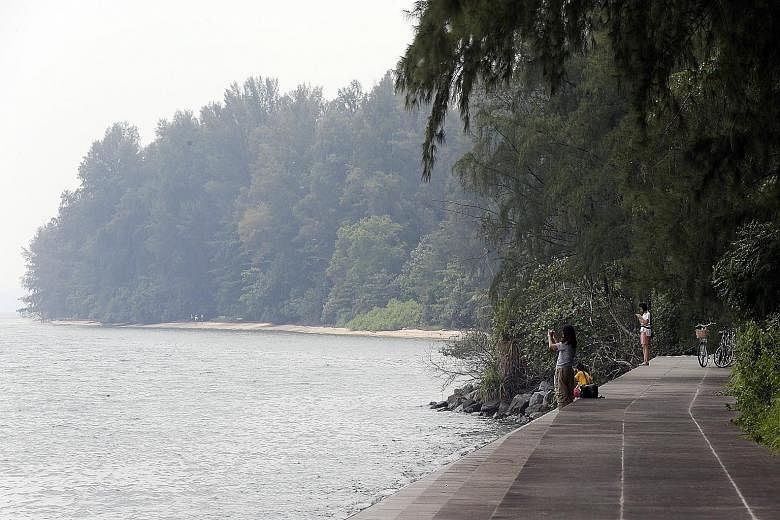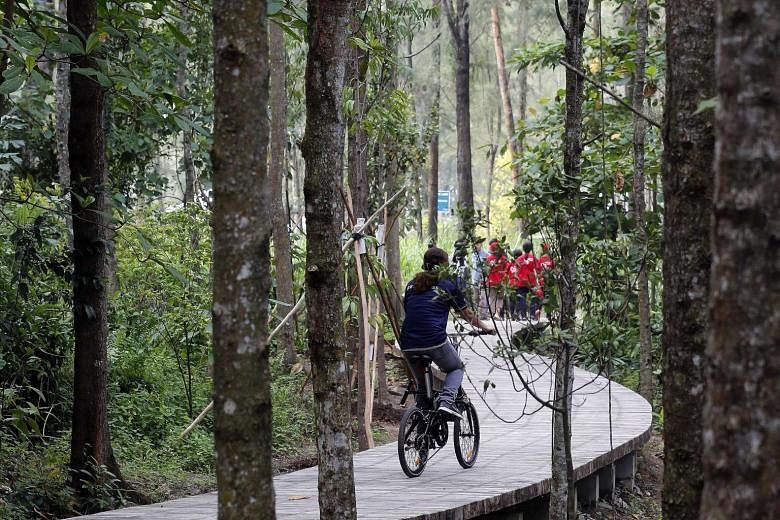SINGAPORE - A slice of rustic island nature, complete with a free-roaming bull, is now open to the public, and there is no need for a boat to get there.
The 50ha Coney Island Park is located on the offshore Coney Island, which is connected to the mainland by two bridges on its western and eastern ends to Punggol Promenade and Pasir Ris Coast Industrial Park 6. The park was officially opened by Coordinating Minister for Infrastructure and Minister for Transport Khaw Boon Wan.
Costing about $3 million, the park took 15 months to build. It features a beach that stretches 2km and a 2.4 km-long path that is part of the park connector network, which cyclists can use to travel between Pasir Ris and Punggol.
Keen-eyed visitors may also encounter many different types of plants and animals there - the park is home to 86 tree species and at least 157 animal species, including nationally threatened species such as the spotted wood owl and the rusty-breasted cuckoo.
Luckier visitors may even come across the single Brahman bull that roams freely across the island.

To give that authentic feel, there is no electricity or piped water on the island. Instead, electricity to power the pumps for toilets is generated from solar power, while water for flushing and hand washing is harvested from rain.
Most of the signboards, benches and boardwalks are made using timber from uprooted casuarina trees, which grow well on coastal habitats like those on Coney Island.
The National Parks Board (NParks), which manages the park, has also tried to preserve the island's original lush vegetation by intentionally leaving the beaches uncleared and allowing greenery to grow in its natural environment.
"The main distinguishing feature is the rustic charm of the park. We want to keep it as basic as possible," said Ms Kartini Omar, senior director of parks from NParks. Compared to Pulau Ubin, which has a similar rustic vibe, Coney Island Park is much easier to access as it is connected to the mainland, she added.
The history of the island, also known as Pulau Serangoon, dates back to the 1930s, when it was bought over by the Haw Par brothers - Aw Boon Haw and Aw Boon Par, who built a beach villa there.
The villa fell into disrepair after World War II and the island remained uninhabited until 1950, when Indian businessman Ghulam Mahmood bought the island with the intention to turn it into a resort.
He named it after the Coney Island amusement park in New York, but his plans never materialised after he was fined for corruption.
Long-time Punggol resident Low Joo Kek, 60, said that as a child, he would swim 30m from the mainland to Coney Island during the low tide to pick shellfish on the beach.
Welcoming the throwback nature of the island, he said: "I'm glad plans to turn the island into an amusement park didn't materialise. There is not much difference between the island then and now."



